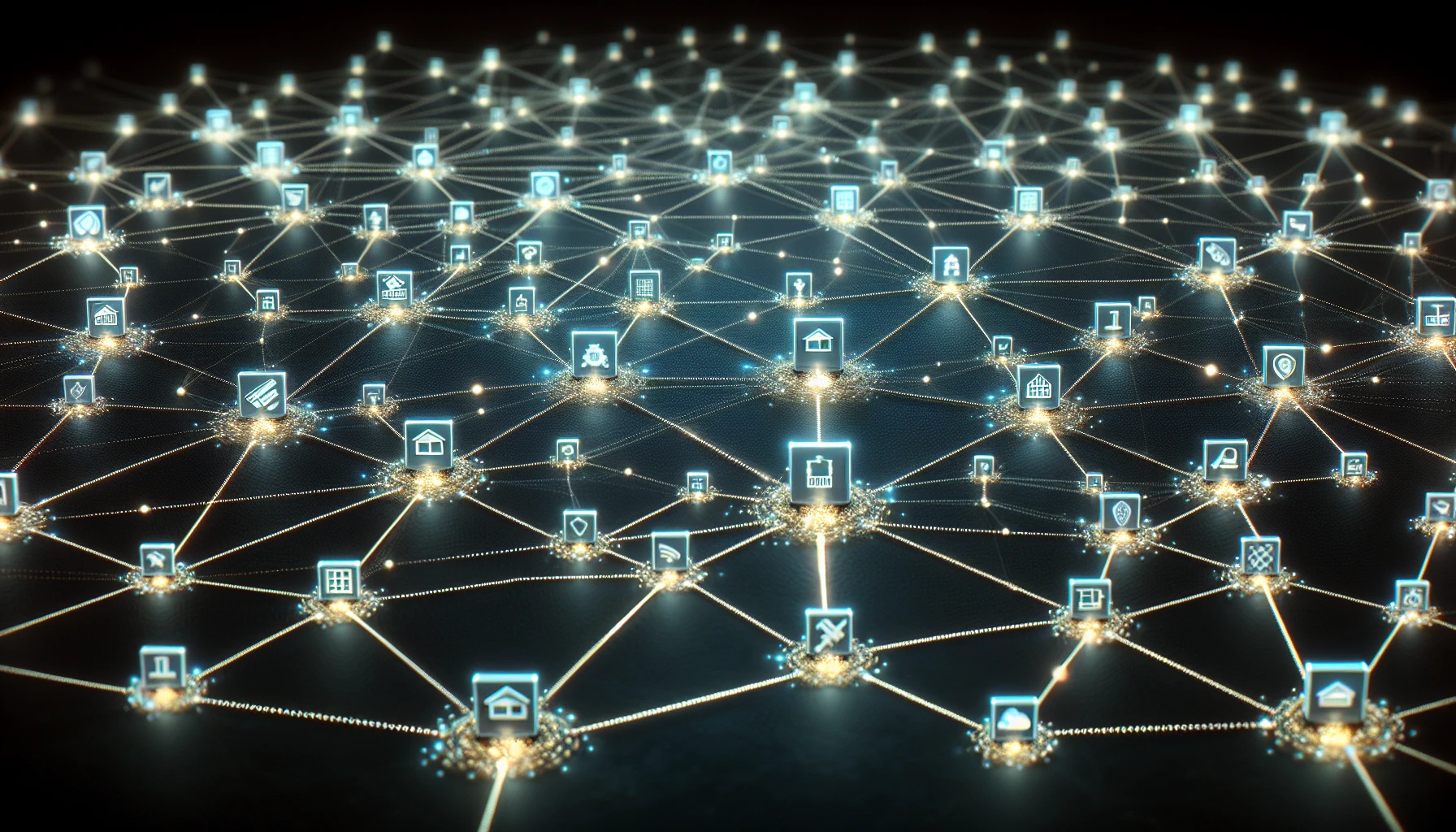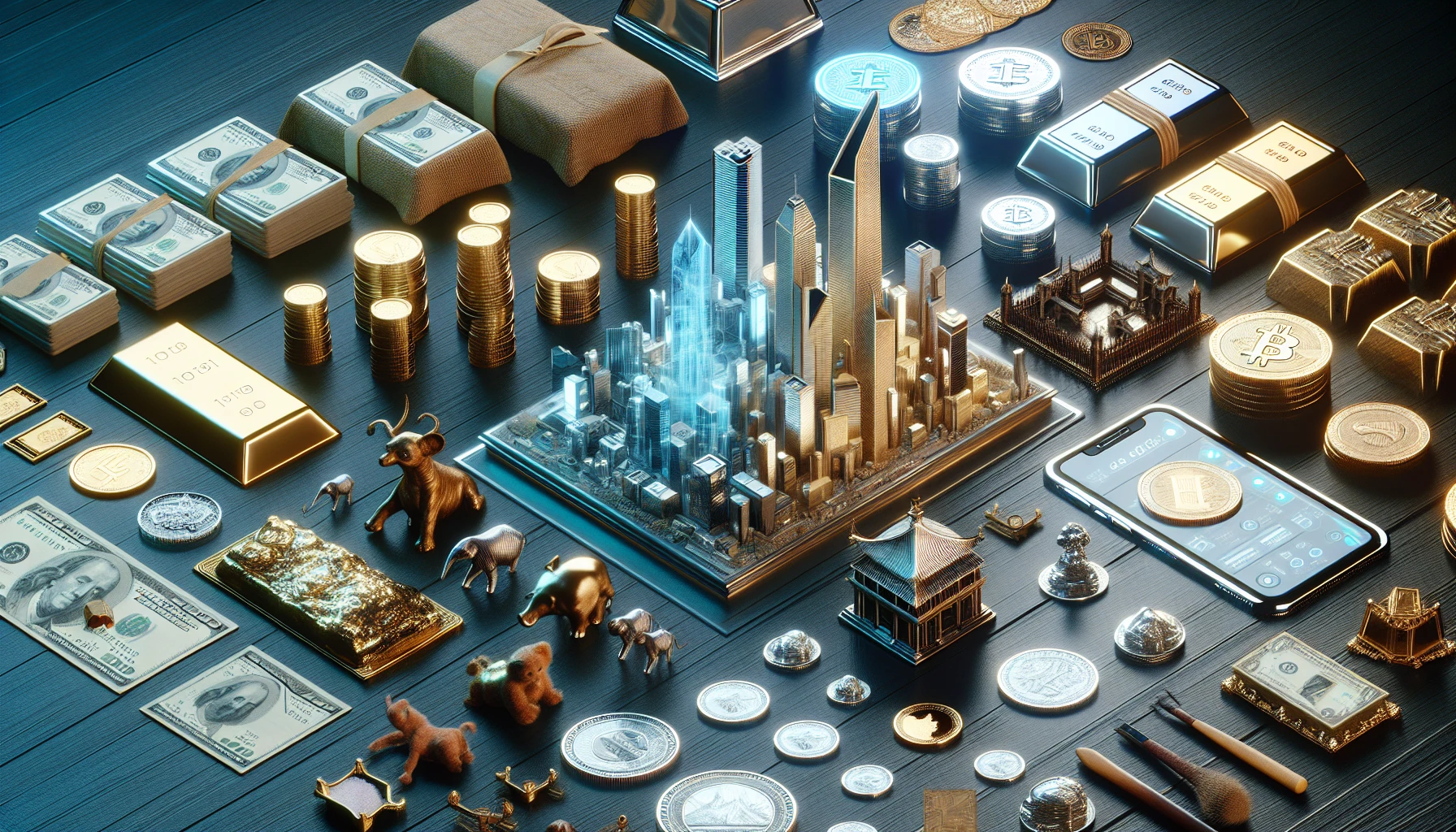Bringing Tangible Value to the Digital Age: How Real World Assets are Transforming Investment Strategies
Tokenizing real-world assets is transforming the traditional investment landscape, making it as simple and convenient to invest in tangible assets such as precious metals or fine art, like stocks and cryptocurrencies. By utilizing blockchain technology for creating digital tokens that represent physical goods, investors can benefit from an unprecedented degree of liquidity and transparency. Asset management via smart contracts enables a higher return on investments made in tokenized world assets while providing challenges for emerging markets along with new opportunities. Are you looking to explore what lies ahead when considering investing?
Key Takeaways
- Tokenization is transforming traditional finance by providing increased liquidity, accessibility and transparency for investors.
- Smart contracts facilitate automated asset management on the blockchain, eliminating intermediaries and automating transactions & settlement processes.
- The growing demand for tokenized assets is projected to lead to a market value of over $544 billion by 2025.
Exploring the Tokenization of Real World Assets

The total value of tokenized assets, including those used for debt financing, is estimated to be around $178 million. This includes tangible assets such as real estate, precious metals and art being converted into digital tokens on the blockchain in order to provide investors with enhanced liquidity, accessibility and transparency. By integrating these investments within decentralized finance (DeFi), new asset classes could become available offering a fresh form of investment returns alongside traditional financial instruments like stocks and bonds.
The Process of Tokenizing Assets
Asset tokenization is an innovative approach in which investors can gain access to increased liquidity and flexibility by creating digital tokens representing the ownership or value of real-world assets such as commodities, art, or real estate on a blockchain. Leveraging both Ethereum and Stellar blockchains for their specific benefits – smart contract features from Ethereum providing programmable tokens while Stellar offering cost effective transactions with high volumes – this process includes validating the original asset’s legitimacy prior to generating its cryptocurrency counterpart.
Types of Assets Being Tokenized

Tokenization has unlocked a broad array of investment opportunities, and provided greater access to previously exclusive asset classes. Stocks, bonds, government bonds and even carbon credits have been tokenized with great success. For instance, Freeport offered 1,000 tokens that represent shares in an Andy Warhol painting for anyone interested in investing.
Asset tokenization not only grants investors the opportunity to participate more easily in markets like real estate or precious metals, but also enables them to benefit from improved liquidity as well as reduced transaction costs associated with these assets types. As such, it can be concluded that this technology is becoming increasingly popular among individuals looking to expand their portfolio’s potential investments options beyond traditional financial instruments.
Legal and Regulatory Compliance
It is essential for tokenized assets to comply with legal and regulatory standards in order for them to be accepted into the financial system. Polymesh’s technology, which involves a compliance protocol combined with its privacy-focused KYC process and identification methods, serves as an example of how this can be achieved on a protocol layer.
Creditcoin’s 3.0 upgrade will bring EVM compatible ‘universal smart contracts’ that link real world asset investors across multiple chains. Thus providing seamless integration between traditional finance systems and tokenized assets while upholding legal requirements around regulatory compliance.
The Impact of Tokenized Assets on Traditional Finance
Tokenized assets are revolutionizing traditional finance by merging with existing financial instruments, leading to greater liquidity and availability for investors. Traditional economic institutions are recognizing the potential advantages that this technology brings and designing platforms which facilitate a smooth connection between real world properties and blockchain technology – UBS & JPMorgan being two examples of these efforts in action.
The DeFi ecosystem stands as one beneficiary from tokenization. Integrating tangible investment prospects into protocols gives participants access to higher profits, various off-chain markets plus new customer bases not available within classical financial models.
Integrating with Traditional Financial Assets
Tokenized assets, including tokenized real world assets, can be integrated with traditional financial investments such as stocks, bonds and ETFs. This involves the conversion of these physical assets into digital tokens on a blockchain that are used to represent ownership rights or even the actual asset itself. Consequently, this leads to increased liquidity as well as improved ability for fractionalised trading in tradable units through digital platforms within both traditional finance and DeFi realms, an example of which being Goldfinch bridging this gap between them so businesses may leverage their tangible holdings.
Enhancing Liquidity and Accessibility

Tokenization allows individuals to have fractional ownership of assets and enables faster settlement times, leading to improved liquidity and lowered transaction costs for investors. This makes it easier for them to access a more varied range of investment options and deploy capital in new ways. An example is stUSDT, which has created $507 million worth Real World Assets (RWA). Holding this token grants users an APY rate close to 4%, allowing holders the ability generate passive income through traditional finance enabled by tokenized asset solutions. Tokenization unlocks doors that open up entirely fresh pathways towards increasing accessibility as well as liquidity on behalf of investors worldwide.
The Role of Smart Contracts in Asset Management
Smart contracts have a huge role to play in asset management, making it more secure by automating transactions and eliminating intermediaries. Through leveraging blockchain technology, smart contracts can also guarantee transparency of the tokenization process, which promotes trust within the system. Such an efficient method ensures accurate verifiable records regarding ownership as well as all conducted transactions concerning assets. Providing enhanced security without excessive paperwork or lengthy procedures being necessary.
Automating Transactions and Settlement
Smart contracts are increasingly being used to automate transactions and settlements, improving efficiency while reducing costs. With predefined actions that initiate when certain conditions are met, these agreements replace the need for intermediaries, paperwork or lengthy procedures resulting in quicker processing with fewer errors.
The benefits of using smart contracts include greater security due to automated operations as well as heightened transparency and trust between parties involved – such as asset investors. Cost-savings also cannot be ignored since settlement is expedited upon meeting requirements for each transaction. Tokenized assets can now easily be accessible through increased liquidity thanks to a streamlined process made possible by smart contract technology.
Ensuring Transparency and Trust
Blockchain technology provides an audited and verifiable record of transactions involving asset ownership, guaranteeing transparency and trustworthiness. By using smart contracts running on the blockchain, assets are managed in a more reliable way as they provide secure exchanges with no need for intermediaries or risk of frauds or misuses.
Such levels of reliability/trust improve tokenized investments’ recognition by financial ecosystems. Thus fostering investors’ confidence towards this novel investment approach related to owning assets.
Investment Yield and Tokenized Real World Assets

Tokenized real-world assets offer investment opportunities that can sometimes outperform traditional markets and DeFi protocols. As an example, stUSDT is a platform with $507 million RWA TVL which provides proof of asset ownership while allowing holders to receive passive income at 4.18% APY as of now.
By comparing yields between tokenized world assets and other conventional methods or decentralized finance projects, investors are able to make informed decisions on where they should direct their investments for maximum returns potential from tokenizing actual resources in the physical realm.
Comparing Yields: DeFi Protocols vs. Traditional Markets
When examining yields between tokenized assets, traditional markets and DeFi protocols, it is important to consider multiple variables. These include speed/cost effectiveness of transactions, transparency in the market place, asset type availability and trading infrastructure among other factors. For instance, with a 401k style pension fund one could expect an average rate return of 5-8%, while Maple Finance’s DeFi protocol offers 8.31%. By familiarizing oneself with these yield variations, investors can gain access to new investment opportunities through tokenization, which are opened up by this fast changing global asset landscape.
Case Studies of Yield-Generating Tokenized Assets
Tokenized assets provide investors with a new way to generate returns, and case studies of such investments can offer beneficial insights. An example is stUSDT: its $507 million contribution to RWA TVL rewards holders with an APY rate of 4.18%. Ondo Finance gives users the option to swap out their stablecoins for USD and purchase different types of assets. This produces fund tokens which come with varying yields ranging from 4.5% to 7.76%, depending on the level of risk involved in that investment strategy.
These examples demonstrate how tokenized asset-based strategies have opened up possibilities for creative investing methods while providing attractive profits for those who participate in them.
Emerging Markets and Digital Asset Adoption
The integration of digital assets with emerging markets is a powerful tool which can provide access to capital, and reduce associated costs. Blockchain technology will enable the building up of an on-chain credit profile for businesses in these areas that could lead to undercollateralized loans becoming more accessible. By leveraging digital asset adoption, companies have the potential for greater financial efficiency while driving innovation too.
Overcoming Barriers to Entry
Tokenized assets provide increased access to investment opportunities in emerging markets for investors, allowing them to take advantage of a more varied selection of investments. This can result in lower transaction costs and higher liquidity, both great benefits when trying to develop the economy through financial inclusion.
An example is Backed Finance, which tokenizes structured products related to publicly traded securities. Giving people an alternative way into investing with these types of assets available now on its platform. All this points towards democratizing entry levels so that everyone has the same chance at getting involved in good investment decisions wherever they may be located geographically or economically speaking.
Building On-Chain Credit Profiles
The utilization of blockchain technology to construct on-chain credit profiles in emerging markets may lead to improved access to undercollateralized loans for businesses. This form of record keeping can provide an open and transparent method for lenders assessing financial transaction data when evaluating a borrower’s credibility, allowing them the confidence needed to decide upon capital allocation terms. By developing this approach, it is anticipated that more efficient use of resources will be attainable within these regions.
Navigating Risks and Challenges
Ensuring ownership and beneficial rights of tokenized assets is critical, as well as performing comprehensive due diligence. The security of these assets must be defended from risks such as system failures, human error or hacking by malicious actors with the implementation of strong safeguards alongside a complete adherence to regulations. It is imperative that one carefully assesses asset ownership privileges and verifies issuer standing in order to guarantee successful management of liquidity levels while also safeguarding against any risk present for digitalized possessions.
Managing Default Risk
To maintain success and avoid losses, lenders in the tokenized asset ecosystem must mitigate their exposure to default risk. One way of doing this is by conducting due diligence, utilizing smart contracts with assets backed tokens or adhering to regulatory compliance while diversifying investments. An example of a successful company managing default risks effectively in the world of real-world assets is Goldfinch. Since its inception, it has had no defaults on record.
The Importance of Due Diligence
In order to ensure confidence in tokenized assets and their associated projects, investors need to go through a due diligence process. This involves thoroughly reviewing the legal, financial and technological components of the asset to provide transparency into potential risks or issues that may be present. Doing so allows for knowledgeable investment decisions within this constantly evolving field of asset tokenization where new technology developments must be examined alongside regulatory frameworks. Through conducting thorough research before investing, stakeholders have access to essential information needed when it comes to assessing any possible risk associated with such assets.
Future Outlook: The Growing Demand for Asset Tokenization

The outlook for asset tokenization is looking positive, with interest rising from financial institutions and investors alike. Tokenized real estate in particular is expected to hit a market value of over $20 billion by 2022, while the global market has been estimated at hitting an impressive total of around $544 billion by 2025.
These developments offer unique opportunities within traditional finance through blockchain technology-enabled assets like tokens which are suitable for investments as well as businesses embracing such items’ potential to revolutionize the industry landscape.
Summary
Tokenized real-world assets are creating innovative investment solutions by bringing about increased liquidity, accessibility and transparency. Smart contracts for asset management demonstrate the potential of these tokenized assets to revolutionize traditional finance strategies and create better opportunities for investors.
The usage of this type of tokens is becoming increasingly popular in both emerging markets as well as conventional investments such as stocks or cryptos giving tangible assets a new level of convenience just like they had previously experienced with other types of financial instruments. The possibilities that this form of investing holds promise great benefits not only to those who deal in them but also more across the whole economy into the future.
Frequently Asked Questions
What is an example of a real world asset?
Real world assets (RWAs) are tokens, both fungible and non-fungible, which serve as a representation of conventional financial resources on the blockchain, such as tangible resources like real estate or intangible items including government bonds and carbon credits.
What is a real world asset on the blockchain?
Tokenized real-world assets such as commodities, art, and intellectual property can be securely stored on distributed ledger technology to form digital tokens. These world assets are being tokenized for use within the modern economy.
What are the problems with tokenized real world assets?
Tokenizing real-world assets poses potential regulatory risks due to varying jurisdictions, so security is key for the protection of digital assets from hacking and fraud.
What is RWA projects?
Tokenization of real-world assets, such as land, artwork and commodities, enables fractional ownership and 24/7 trading on blockchain platforms in order to enhance liquidity for these physical possessions. Thus RWA projects are used to bring more convenience into the realm of real world asset management.
How do smart contracts play a role in asset management?
Smart contracts allow for trust and transparency by automatically handling asset management when certain predetermined conditions are met. These agreements use technology to ensure that assets are managed properly.

